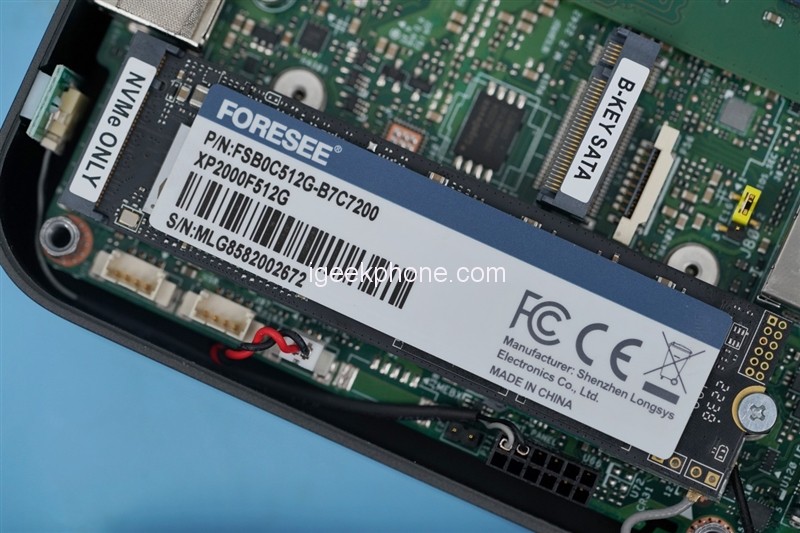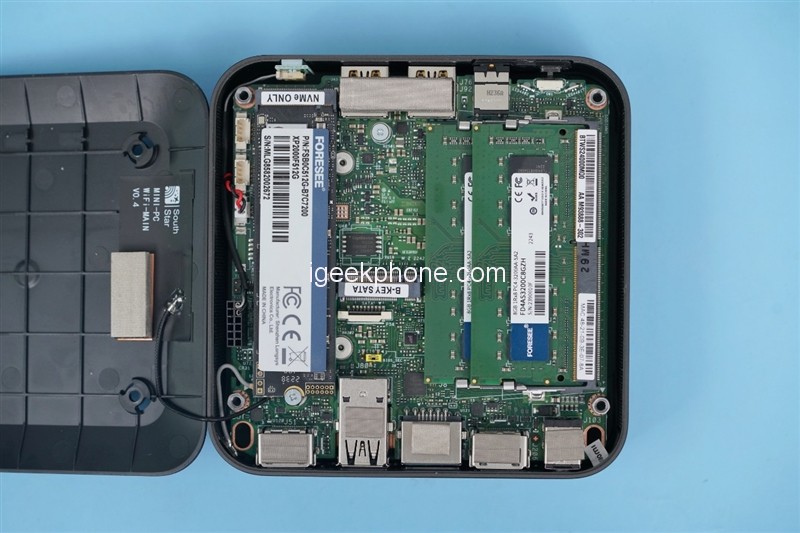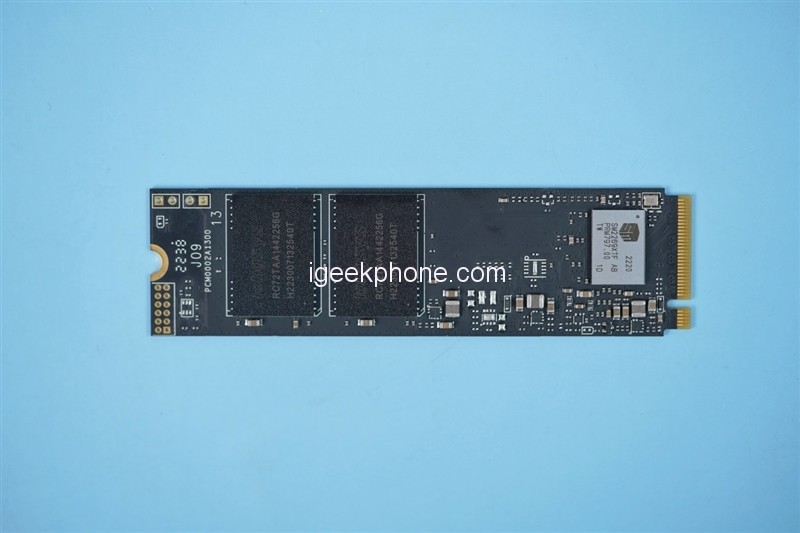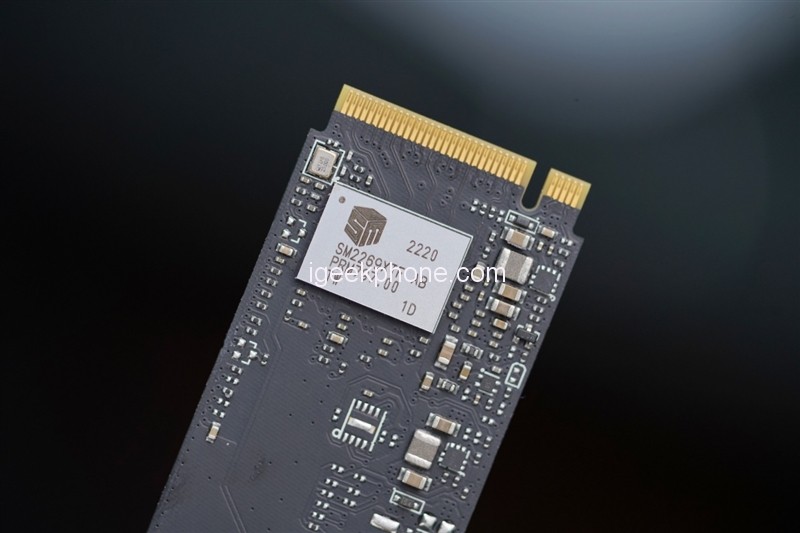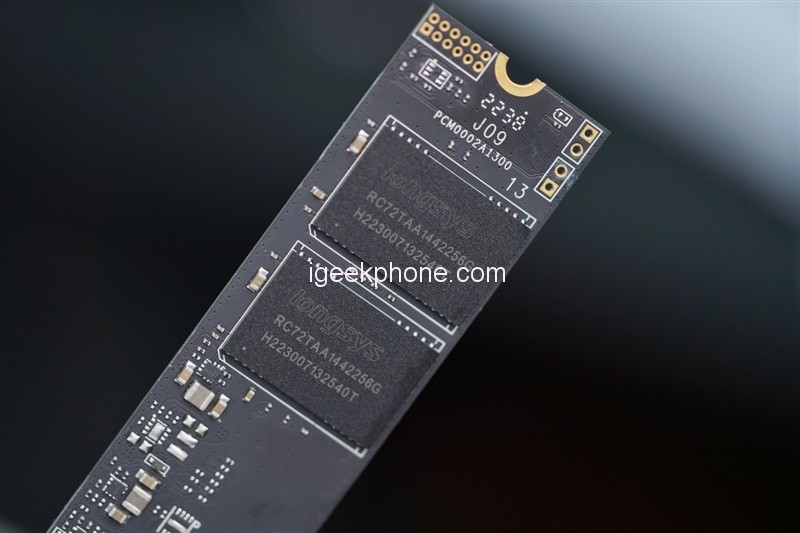In December 2022, Xiaomi Mi Mini Host released the first desktop host – Mi Mini Host. With a volume of 0.44L and a weight of 0.43kg, it is equipped with Intel’s 12th generation Core i5-1240P processor. The performance is not inferior to the mainstream commercial hosts on the market, but the size is only a few tenths.You can also check mi band 8 review details here.
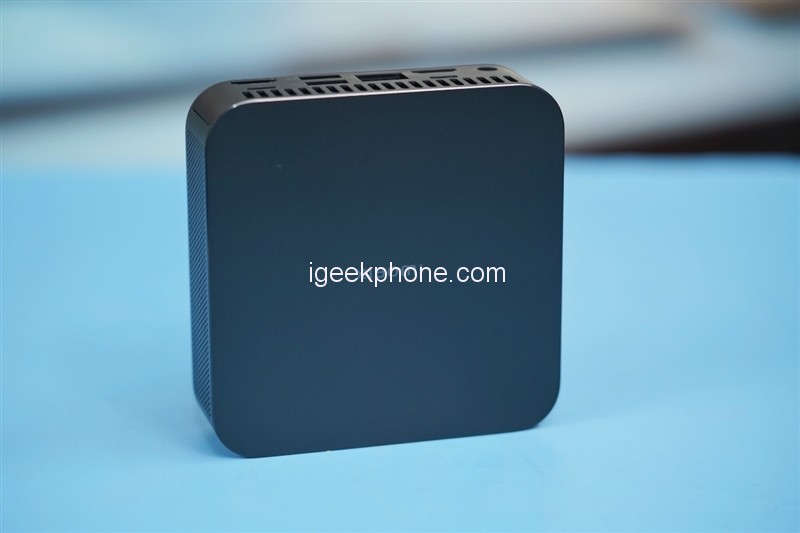
Recently, the company purchased another batch of Xiaomi mini hosts to replace some of the old office hosts in the office. I remember that this host used Samsung DDR4 memory and YMTC PC300 SSD in the first test, but this time when I disassembled the host, I found that the internal storage configuration has changed to Longsys FORESEE XP2000 512GB PCIe 4.0 SSD and 2 FORESEE DDR4 3200MHz 8GB memory.
Speaking of Longsys, many students may not know much about it. Founded in 1999, it is a serious “domestic” enterprise. Longsys’ storage products are used by many enterprises at home and abroad, such as Lenovo, Samsung, ASUS, and ZTE.
At present, Longsys has two self-owned brands, namely FORESEE and Lexar. FORESEE is an industry-class storage brand founded by Longsys in 2011. Its solid-state drives and memory have already been applied to PC notebooks, industrial control and other fields. The application field also occupies a lot of shares.
This time, the Xiaomi Mini Host uses FORESEE memory and SSD. FORESEE XP2000 512GB SSD is a PCIe 4.0 SSD product. It adopts Silicon Motion’s new generation SM2269XT main control chip, cooperates with SMI’s unique NANDXtend technology, and the latest high-performance 4KB LDPC error correction code (ECC) technology, which can provide the latest The new generation of 3D TLC and QLC NAND provides stronger all-round data integrity and error correction capabilities.
This main controller also supports HMB technology, which can dynamically call the system memory to be used as SSD cache, which effectively reduces the cost of materials while ensuring performance.
Design
The main body of the phone adopts CNC integrated fine carving process. The main material of the aluminum alloy and the bright metal chamfer look full of texture, the touch is delicate and moist, and it also has a certain gloss.
The measurements of the Xiaomi Mini Host are 112 x 112 x 39mm, the volume is only 0.444L, which is equivalent to 1/100 of an ATX case, and the net weight is 0.437kg, which is about the weight of two 6-inch mobile phones.
There are 2 USB 2.0 and a 3.5mm headset-in-one interface on the front, next to a power button. There is a 2.5G network port, 1 USB 3.0, 1 USB 2.0, 2 HDMI 2.0, and 2 Thunderbolt 4 ports on the back. The circular power jack on the far left. Unexpectedly, the memory is also from FORESEE, 2 pieces of DDR4 3200MHz 8GB memory.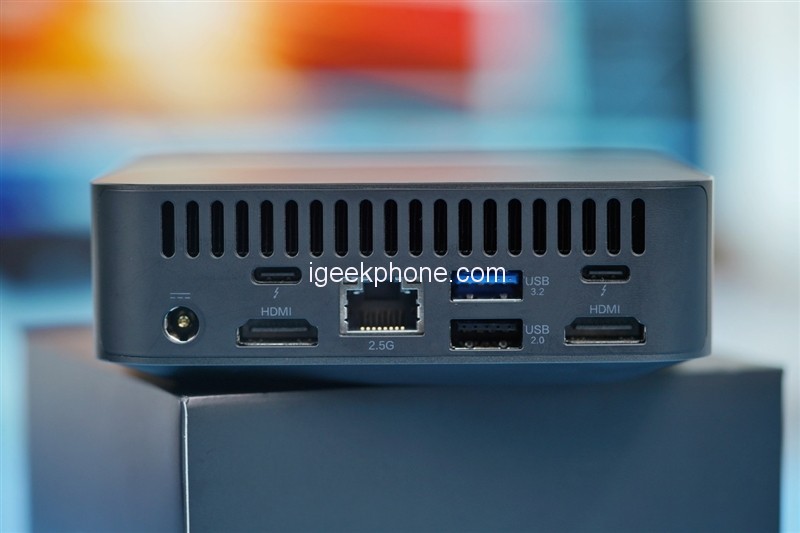
Built-in FORESEE XP2000 512GB SSD. Take off the SSD, tear off the front sticker, you can see the main control and flash memory information, a total of 2 NAND, no DRAM cache. Silicon Motion’s SM2269XT main controller, although it only has 4 channels, supports 1600MT/s specifications, so it can also achieve a maximum read and write speed of 5GB/s.
176-layer TLC flash memory, with a single chip capacity of 256GB, and 2 chips make up a capacity of 512GB.
Performance Test
1. CPU-Z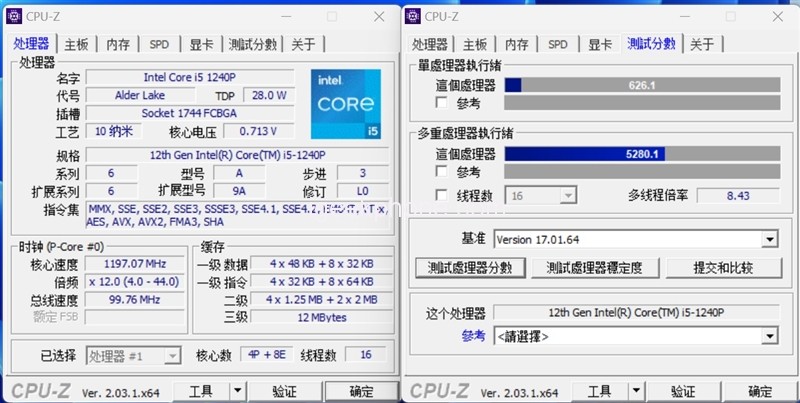
The i5-1240P has a single-threaded score of 626 and a multi-threaded score of 5280.
2. CINEBENCH R15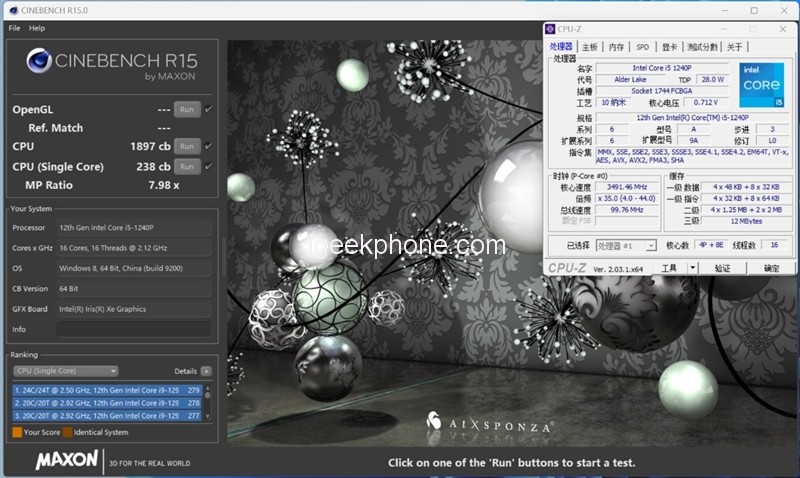
In the CineBench R15 test, the single-thread score of i5-1240P is 238cb, and the multi-thread score is 1897cb.
3. CINEBENCH R20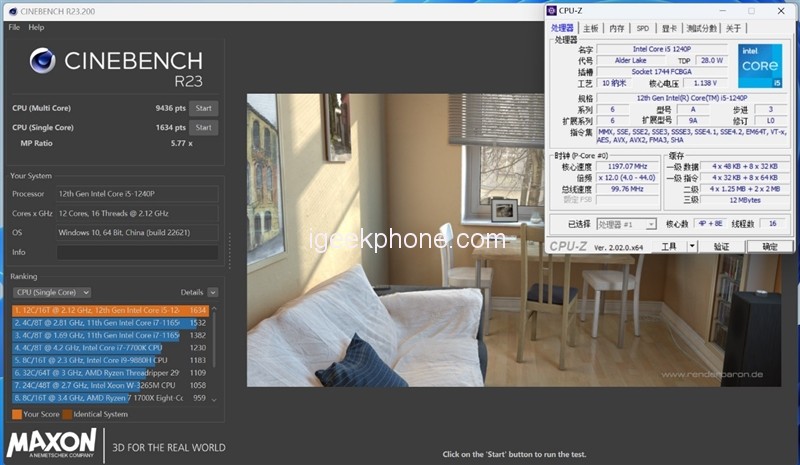
In the CineBench R20 test, the i5-1240P has a single-thread score of 546 and a multi-thread score of 3910.
4. CINEBENCH R23
In the CineBench R23 test, the single-thread score of i5-1240P is 1634cb, and the multi-thread score is 9436cb.
5. 3DMark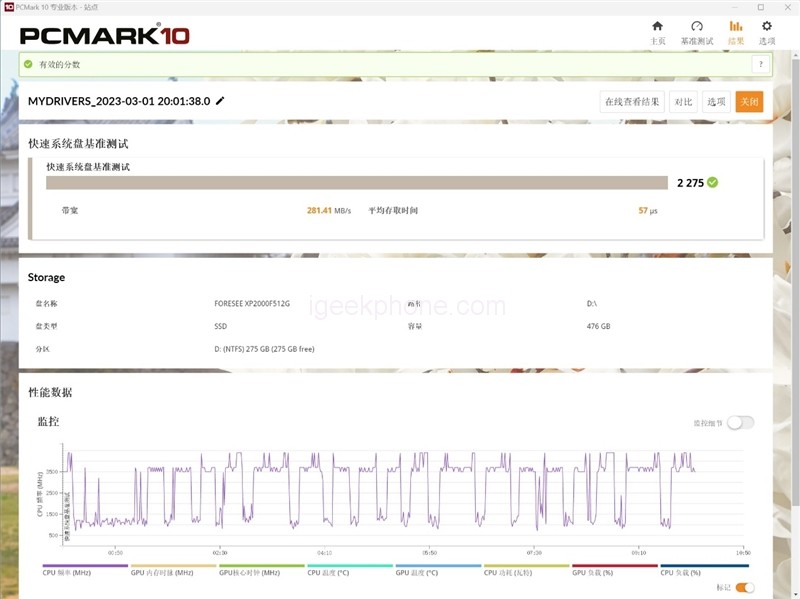
The i5-1240P processor integrates the Iris Xe GPU with 96 sets of EUs and a frequency of 1250MHz.
In the 3DMark Fire Strike Extreme test, the graphics score of the Iris Xe GPU is 1851 points, which is comparable to the full-blooded MX 250 discrete graphics card.
7. League of Legends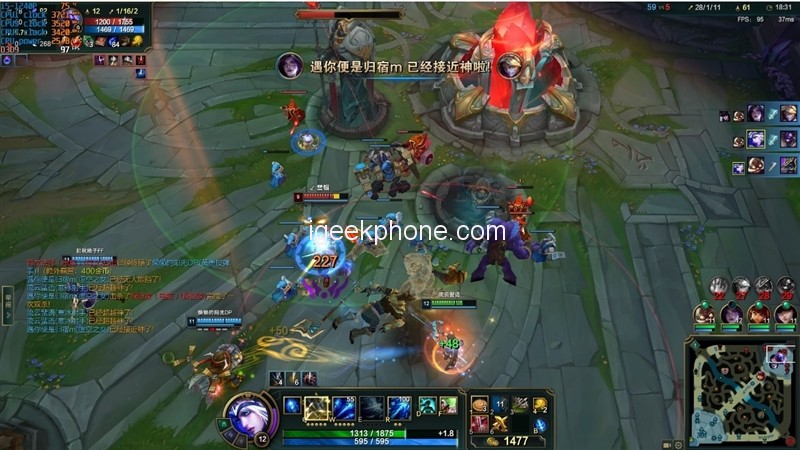
We played a game of LOL, the screen was set to the highest quality, resolution 1920*1080P, in the final stage of large-scale decisive battle, the Xiaomi mini host basically maintained above 95FPS throughout the whole process, and the i5-1240P has maintained a performance release of above 25W. The temperature of the device is about 75 degrees.
Disk Managment
1. Crystal Disk Mark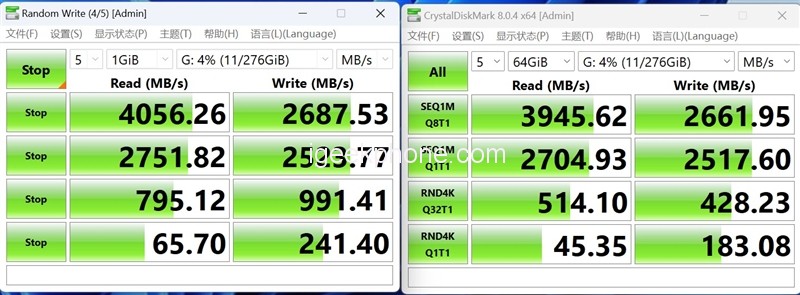
In the CrystalDiskMark test, the sequential reading speed of FORESEE XP2000 512GB SSD exceeded 4000MB/s, reaching 4056MB/s, and the writing speed also reached 2687MB/s; the reading and writing speeds of 44K exceeded 65MB/s and 241MB/s respectively.
2. AS SSD Benchmark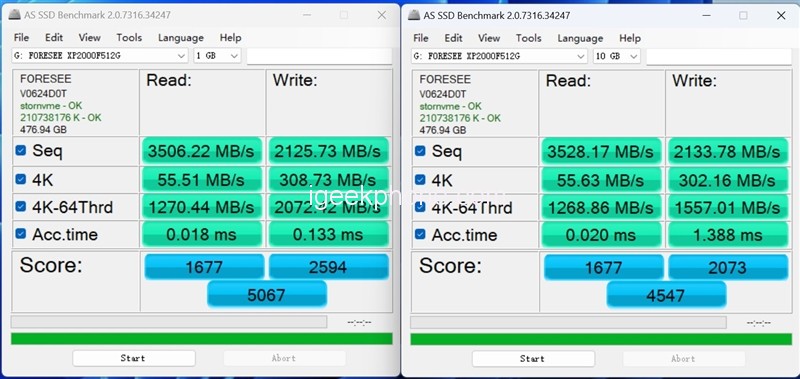
On the left is the 1GB capacity test. The total AS SSD Benchmark score is 5067. The highest sequential read and write speeds are 3506MB/s and 2125MB/s respectively, and the 4K random read and write speeds are 55MB/s and 308MB/s.
On the right is the test with 10GB capacity, with a total score of 4547. The highest sequential read and write speeds are 3528MB/s and 2133MB/s respectively, and the 4K random read and write speeds are 55MB/s and 302MB/s respectively.
3. ATTO Disk Benchmark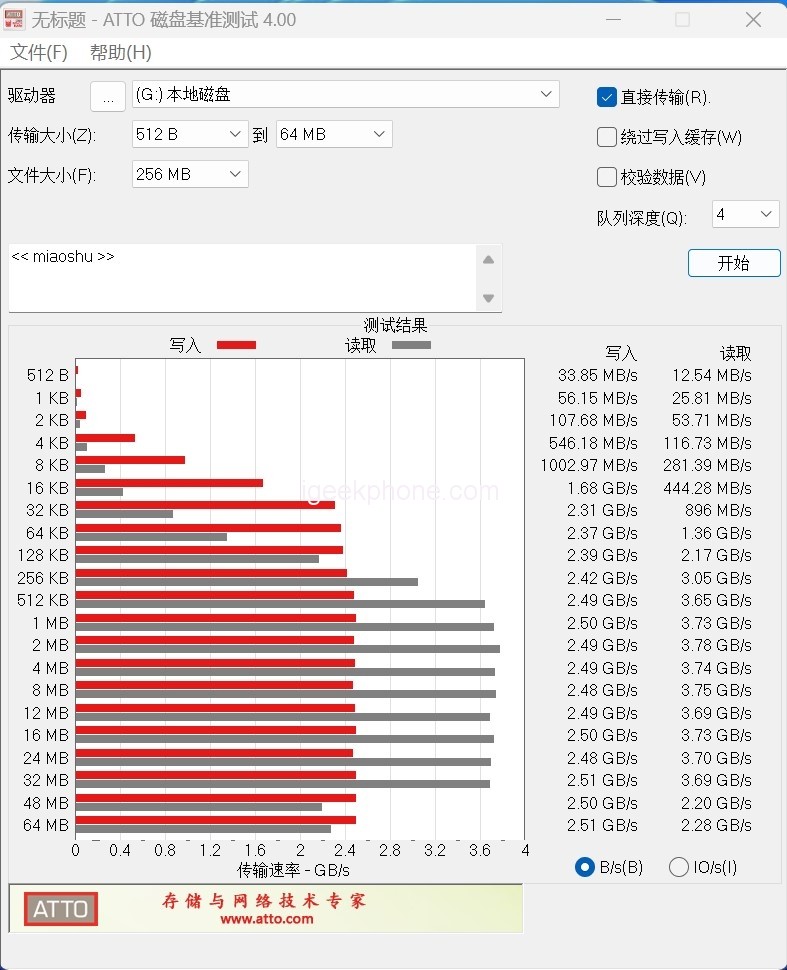
According to the results of ATTO Disk Benchmarks, FORESEE XP2000 512GB SSD can also achieve a speed of over 30MB/s for reading and writing small files of 0.5KB.
At 32K, the writing speed reached 2.31GB/s, and the reading speed was 896MB/s. Starting from 512KB, the write and read speed can be stabilized at about 3.7GB/s, or 2.5GB/s.
4. PCMark 10 storage test
In the storage test part of PCMark 10, we chose the fast system disk benchmark test. The measured score is 2279, the bandwidth is 281MB/s, and the average access time is 57 microseconds, which generally belongs to the mainstream level.
Memory Test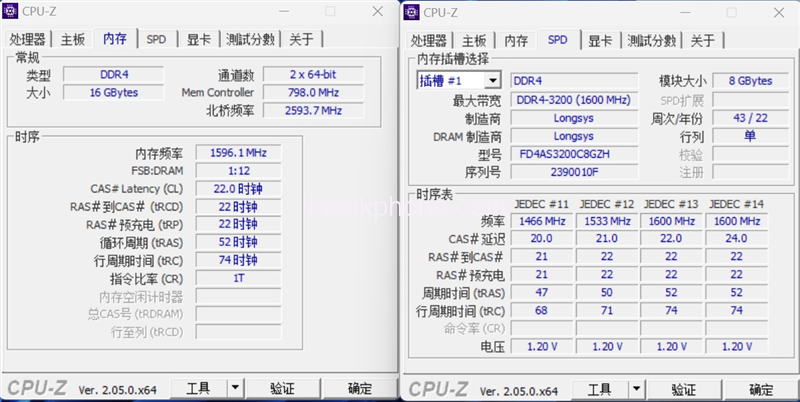
The Mi mini host uses 2 FORESEE DDR4 3200MHz 8GB memory, and the memory timing is 22-22-22-52 CR1.
1. AIDA64 memory cache test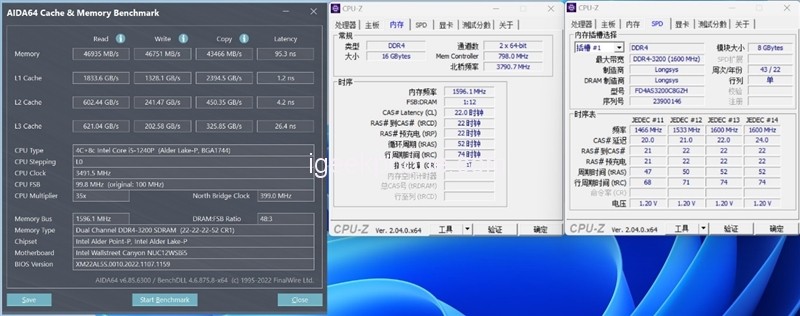
The measured memory reads 46935MB/s, writes 46751MB/s, and 43466MB/s, with a delay of 95.3ns. This performance is basically consistent with Samsung’s original DDR4 3200MHz memory.
2. SISoftware memory bandwidth test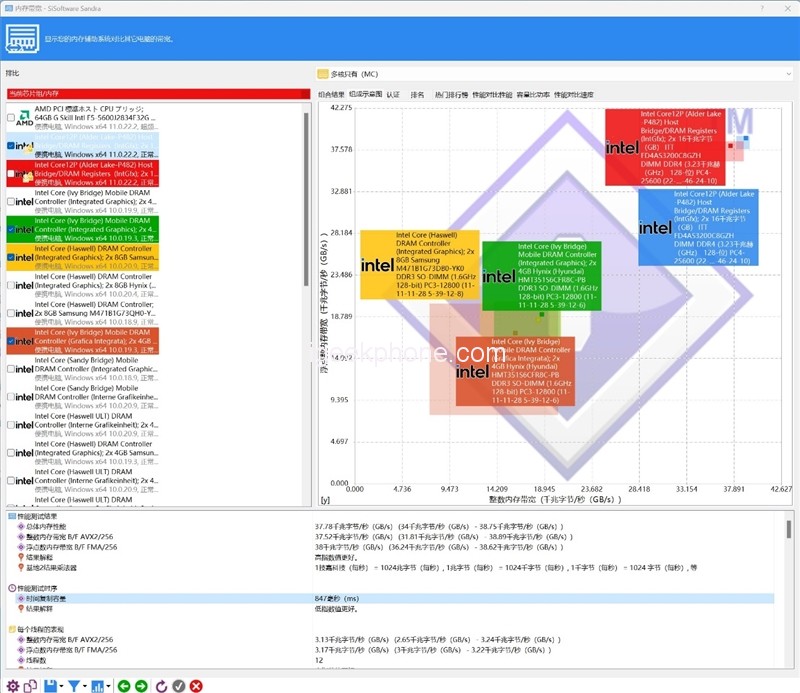
The measured memory bandwidth of SISoftware Sandra is 37.78GB/s, and most notebook DDR4 3200MHz dual-channel memory scores are around 35GB/s.
3. Memory stability test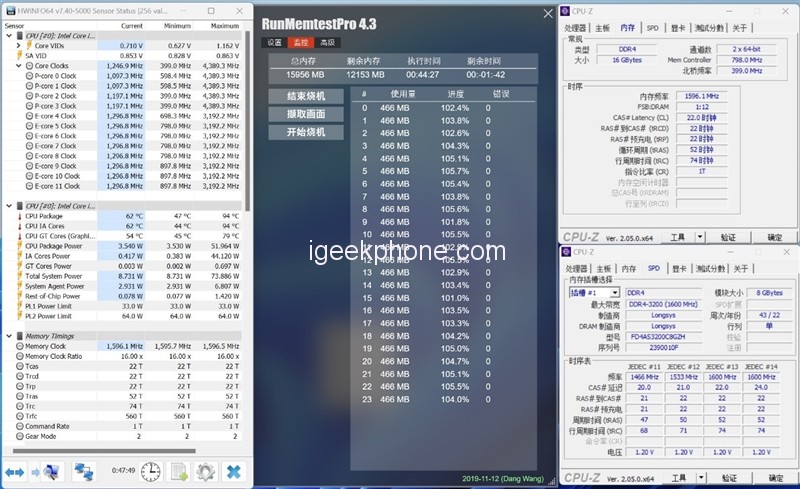
Generally speaking, the memory that can pass the Memtest stability test and guarantee 0 errors is qualified memory, and there will be no blue screen, freeze, or crash of the memory during daily use.
It took 44 minutes to pass the Memtest 100% stability test, and there were zero errors throughout the test, which proved that there was no problem with the compatibility and stability of the memory.
Verdict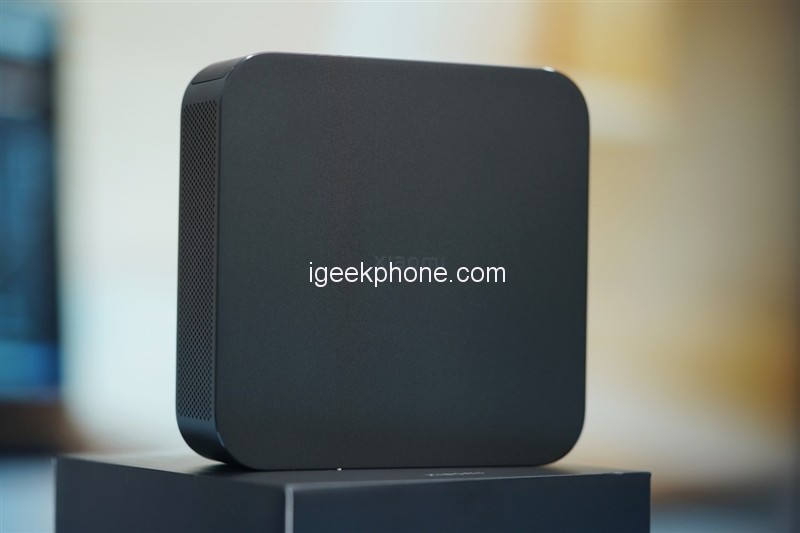
As a company ranked 266th in the Fortune 500 in 2022, Xiaomi Group has strict requirements on product performance and quality control when selecting partners. The FORESEE XP2000 series SSD equipped on the Mi mini machine is a PCIe 4.0 SSD with high performance and low power consumption. It focuses on the OEM market and has passed the rigorous verification of PC manufacturers.
In the actual test, the FORESEE XP2000 512GB SSD has basically exerted the performance that the Silicon Motion SM2269XT master control should have. The sequential reading speed exceeds 4000MB/s, and the writing speed also reaches 2600MB/s.
Although there is no DRAM cache, HMB technology solves this problem well. Multiple tests have shown that the 4K read speed of the XP2000 512GB SSD can reach 65MB/s, and the write speed exceeds 240MB/s, which is also the performance only available in mid-to-high-end NVMe SSDs. Usually, the read speed of SSD 4K without DRAM cache will be around 20MB/s or even lower.
Such an SSD allows the 3,000 yuan Xiaomi Mini Host to catch up with mainstream thin and light notebooks in terms of storage performance. As for FORESEE DDR4 3200MHz 8GB memory, its reading and writing performance and latency are almost identical to those of Samsung’s original DDR4 3200MHz 8GB memory, which is very suitable for use in cost-effective notebooks, mini hosts and other products.
Xiaomi is just one case. In the future, there should be more domestic PC products using FORESEE memory and SSD products. Of course, I also hope that more local companies like Longsys will be born in the future to participate in the competition among international storage companies.
Read Also: Xiaomi Mini PC Review: Your Compact Computing Solution
Do not forget to follow us on our Facebook group and page to keep you always aware of the latest advances, News, Updates, review, and giveaway on smartphones, tablets, gadgets, and more from the technology world of the future.










